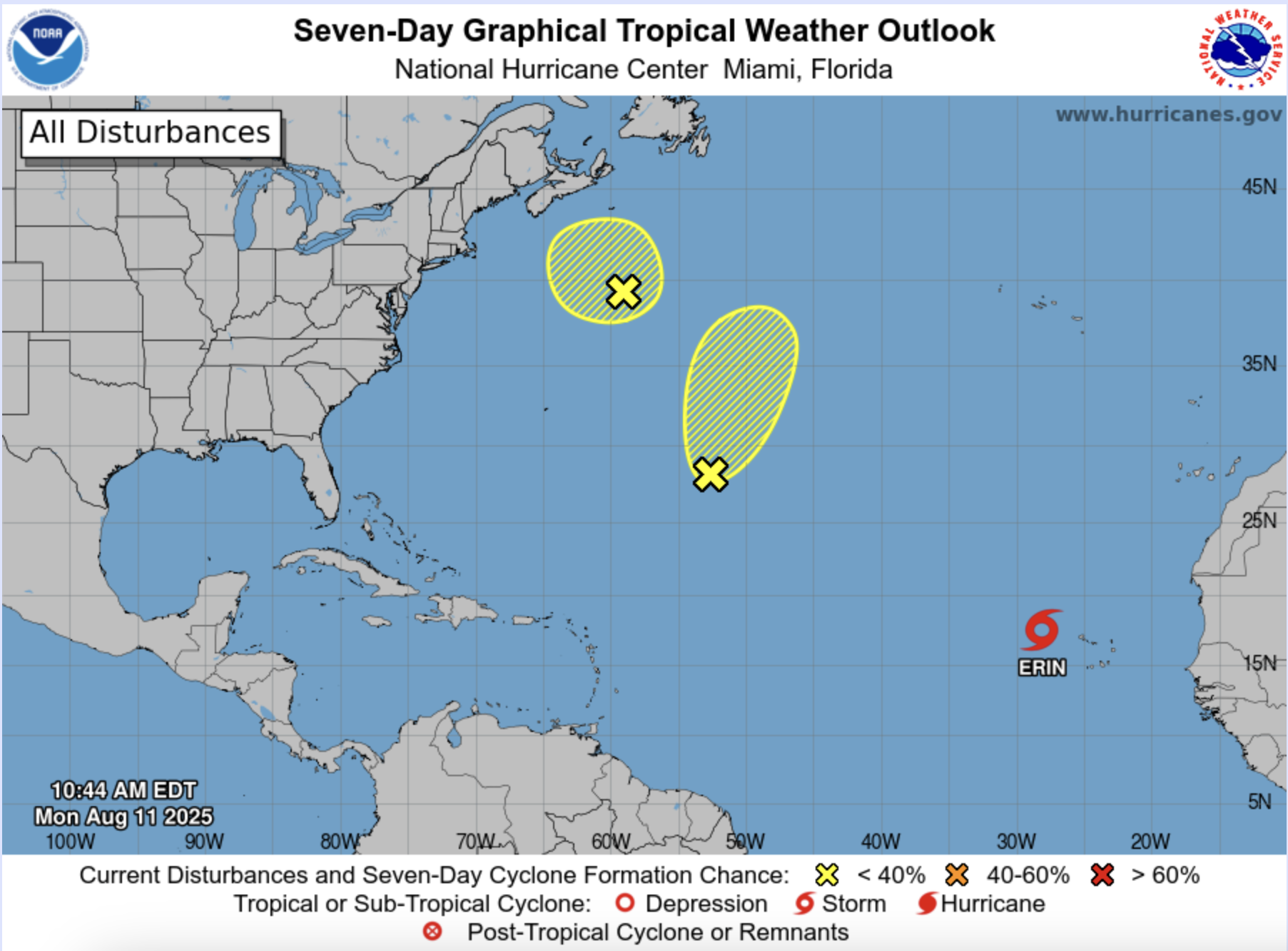

Audio By Carbonatix
A tropical depression Monday morning developed into named storm Tropical Storm Erin, which could become the first hurricane of the 2025 season, according to the National Hurricane Center.
Erin is still thousands of miles away from South Florida, but could develop into a hurricane if it reaches the U.S., according to the National Weather Service. It could be the beginning of what forecasters are predicting to be another active hurricane season this year, according to Colorado State University’s Department of Atmospheric Science.
Where Is Erin?
An area of low pressure west of the Cabo Verde Islands is producing a cluster of showers and storms, including Tropical Storm Erin. On Monday morning, the storm was just west of Cabo Verde, about 3,700 miles away from South Florida.
Miami, make your New Year’s Resolution Count!
We’re $16,000 away from our End-of-Year campaign goal, with just a five days left! We’re ready to deliver — but we need the resources to do it right. If Miami New Times matters to you, please contribute today to help us expand our current events coverage when it’s needed most.
Where Is She Headed?
Erin is traveling west at about 20 mph and is expected to be over the Caribbean by the weekend, according to The Weather Channel.
How Strong Is Erin?
Satellite data shows sustained winds are about 45 mph, with higher gusts, and forecasters expect that to strengthen over the next several days.
What Are the Chances It Will Become a Hurricane?
Some forecasters predict a high chance of Erin becoming the first hurricane of the 2025 Atlantic season, with Orlando meteorologist Noah Bergren putting the likelihood at 90 percent.
“For now, there is no imminent concern for the U.S. east coast,” he said in a social media post. “But I want to stress there is a large spread still in the data. Ruling out scenarios before something has even formed eight-plus days out is not possible. There does, thankfully, appear to be a solid chance the eventual storm recurves away from the U.S. east coast, but definitely not decided yet.”
What’s the Outlook for the Rest of the Season?
A warmer-than-normal tropical Atlantic, paired with potential La Niña conditions (abnormally low sea surface temperatures in the central and eastern equatorial Pacific), has created a dynamic environment for intense hurricanes to strike the Atlantic coast, according to a report from Colorado State University.
Miami was spared by the busy 2024 hurricane season, and researchers’ 2025 predictions include a similarly low 26 percent chance that a major hurricane will strike somewhere along Florida’s Atlantic coast. Forecasters predict a 92 percent chance of a named storm striking somewhere in Florida this year and a 35 percent chance the state sees a major hurricane within 50 miles; both numbers are down from 2024, according to the university.